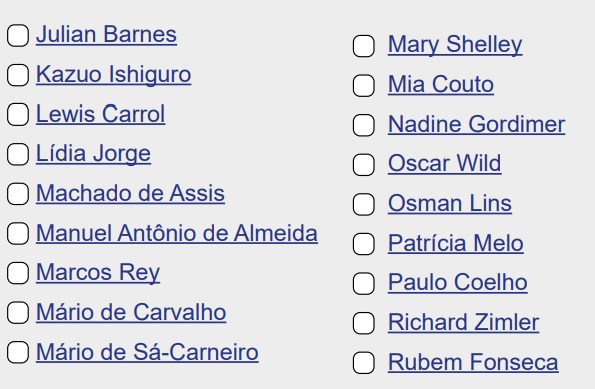Lesson 12 activities (hands on)
Many languages, many cultures
What is COMPARA?
COMPARA is a bidirectional parallel corpus of Portuguese and English with original texts in these two languages and their respective translations, linked phrase by phrase. If we insert a word in Portuguese, it is possible to see how that word was translated into English in different contexts.
Note: This activity can be adapted to parallel corpora available in other languages.
Activity 1
Access the parallel online corpus COMPARA and read the instructions for use, including basic, advanced and power use searches. Answer the question below.
Activity 2
Click on ‘Advanced Search’ and scroll to the bottom of the page. From the authors listed on COMPARA, which ones do you know? Discuss it with one of your peers and your teacher.

Activity 3
One of the most widely read authors in Brazil represented in the COMPARA corpus is José de Alencar, the author of Iracema. Have you read this novel before? What is it about?
The author wrote a novel about indigenous culture in 1865, which was translated in 1886 and in 2000.
Using the advanced search function, look for the author José de Alencar. See the aligned texts and look for culturally marked terms that portray the indigenous culture in Portuguese and/or in your own language.
Note: The expression ‘culturally marked terms’ has been developed by professor Francis Aubert. ‘Culturally marked terms’ are those related to one specific culture and not known in any other, such as cachaça, curau, maculelê, and curupira in Portuguese. They are terms of our folklore and only Brazilian people know them, however, in a translation, the translator works with them and finds ways to explain what they are, allowing people from other cultures to learn more about that country.
Activity 4
How is the indigenous culture represented by the author in the time the novel was written?
In the examples below you can see the same excerpt produced by two professional translators in different decades. One uses active and the other passive voice to translate the same sentence. At the same time, neither one of them explained the indigenous word “uiraçaba”, which means “place to keep the arrow”. Would you have translated it in a different way, how?
“Porém a virgem lançou de si o arco e a uiraçaba, e correu para o guerreiro, sentida da mágoa que causara”
Translation 1: But the maiden cast aside the bow and uiraçaba and ran toward the warrior, regretting the pain she had caused.
Translation 2: But it made the virgin cast away her bow and Uiraçába, and run to the warrior, pained at the pain she had caused.
Activity 5
What do you know about the current indigenous culture in Brazil or in other countries?
Read about indigenous peoples in Brazil in following link or about the indigenous tribes in Canada in the following link.
Discuss the following questions with your peers:
- Were you aware of the information provided in the texts?
- What called your attention about the way indigenous people live nowadays?

